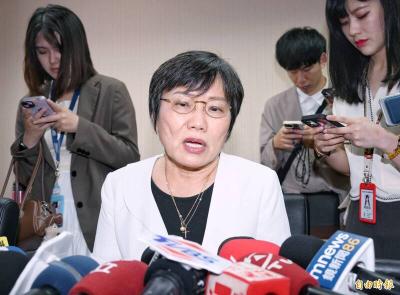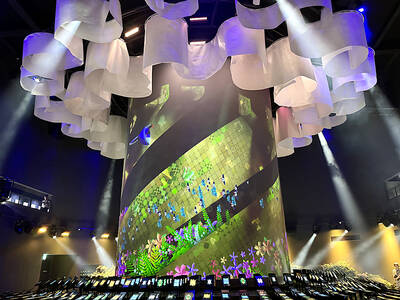Recent media interest about new types of submarines being developed by the People’s Liberation Army Navy (PLAN) could provide important clues about China’s naval capabilities and intentions, a specialist on China said in a recent article.
“Whereas the development and deployment of the Chinese navy’s surface fleet have been prominently displayed in unprecedented scale in recent naval exercises both in the South and East China Sea, the expansion of China’s subsurface fleet appears to have been slowed in recent years,” Russell Hsiao, editor of the China Brief, a publication of the US-based Jamestown Foundation, wrote in the publication’s latest edition.
From 2007 until this year, he said, the total number of submarines deployed in the PLAN was steady, rising by a single vessel, to 63, Hsiao wrote.
While the scope of the PLAN’s development remained to be seen and would depend on tested capabilities rather than media photos and speculation, the increased incidence of reports on new submarines could nevertheless provided important clues about Beijing’s strategic outlook, he said.
“In this context, these reports raise interesting questions about what is known regarding the pace of investments that China has undertaken to increase stealth, missile capacity, survivability and the capability to project its submarine force both regionally and globally,” he wrote.
Early last month, a Hong Kong-based media ran a story based on a photo of a new conventionally powered attack submarine that had been circulating on the Web for several weeks. The SSK submarine was allegedly developed by state-owned China Shipbuilding Industry Corp, China’s largest shipbuilder, the report said.
The People’s Liberation Army (PLA) has yet to officially acknowledge reports that the new submarine has stealth capabilities.
“Chinese academic engineering literature cited by a prominent Western defense magazine supports the fact ‘that the PLA has also been researching fuel cell AIP engine technology — with the PLA having benefited via Chinese academics from several conferences with German fuel cell technology experts,” the report said, citing Jane’s Defense Weekly.
“The addition of an AIP system could allow a Chinese submarine to operate underwater for up to 30 days on battery power, and would make the Song and Yuan submarines inaudible to existing US surveillance networks-and US subs,” the report said.
Reports also claim that China would finish testing and deploy two additional Yuan-class submarines by the end of next year, Hsiao wrote, adding that if reports were true, it would confirm the belief, held by some experts, that the apparent slowdown in the PLAN’s expansion was only a transitory phase and that its submarine fleet appeared set to resume its upward trajectory.
These revelations coincide with the recent sighting of a new Type 093 Shang-class nuclear-powered attack submarine docked at a Chinese naval base in Sanya, on Hainan Island. A photograph obtained by Japan-based Kyodo News showed two nuclear-powered submarines docked at a quay on the base.
Hsiao wrote that the reports and images showcasing new submarines and deployments underscored Beijing’s growing assertiveness, which has also been accompanied by an increasing incidence of sorties and exercises in waters close to Taiwan, Japan and South Korea.

Chinese Nationalist Party (KMT) Chairman Eric Chu (朱立倫), spokeswoman Yang Chih-yu (楊智伃) and Legislator Hsieh Lung-chieh (謝龍介) would be summoned by police for questioning for leading an illegal assembly on Thursday evening last week, Minister of the Interior Liu Shyh-fang (劉世芳) said today. The three KMT officials led an assembly outside the Taipei City Prosecutors’ Office, a restricted area where public assembly is not allowed, protesting the questioning of several KMT staff and searches of KMT headquarters and offices in a recall petition forgery case. Chu, Yang and Hsieh are all suspected of contravening the Assembly and Parade Act (集會遊行法) by holding

PRAISE: Japanese visitor Takashi Kubota said the Taiwanese temple architecture images showcased in the AI Art Gallery were the most impressive displays he saw Taiwan does not have an official pavilion at the World Expo in Osaka, Japan, because of its diplomatic predicament, but the government-backed Tech World pavilion is drawing interest with its unique recreations of works by Taiwanese artists. The pavilion features an artificial intelligence (AI)-based art gallery showcasing works of famous Taiwanese artists from the Japanese colonial period using innovative technologies. Among its main simulated displays are Eastern gouache paintings by Chen Chin (陳進), Lin Yu-shan (林玉山) and Kuo Hsueh-hu (郭雪湖), who were the three young Taiwanese painters selected for the East Asian Painting exhibition in 1927. Gouache is a water-based

Taiwan would welcome the return of Honduras as a diplomatic ally if its next president decides to make such a move, Minister of Foreign Affairs Lin Chia-lung (林佳龍) said yesterday. “Of course, we would welcome Honduras if they want to restore diplomatic ties with Taiwan after their elections,” Lin said at a meeting of the legislature’s Foreign Affairs and National Defense Committee, when asked to comment on statements made by two of the three Honduran presidential candidates during the presidential campaign in the Central American country. Taiwan is paying close attention to the region as a whole in the wake of a

OFF-TARGET: More than 30,000 participants were expected to take part in the Games next month, but only 6,550 foreign and 19,400 Taiwanese athletes have registered Taipei city councilors yesterday blasted the organizers of next month’s World Masters Games over sudden timetable and venue changes, which they said have caused thousands of participants to back out of the international sporting event, among other organizational issues. They also cited visa delays and political interference by China as reasons many foreign athletes are requesting refunds for the event, to be held from May 17 to 30. Jointly organized by the Taipei and New Taipei City governments, the games have been rocked by numerous controversies since preparations began in 2020. Taipei City Councilor Lin Yen-feng (林延鳳) said yesterday that new measures by